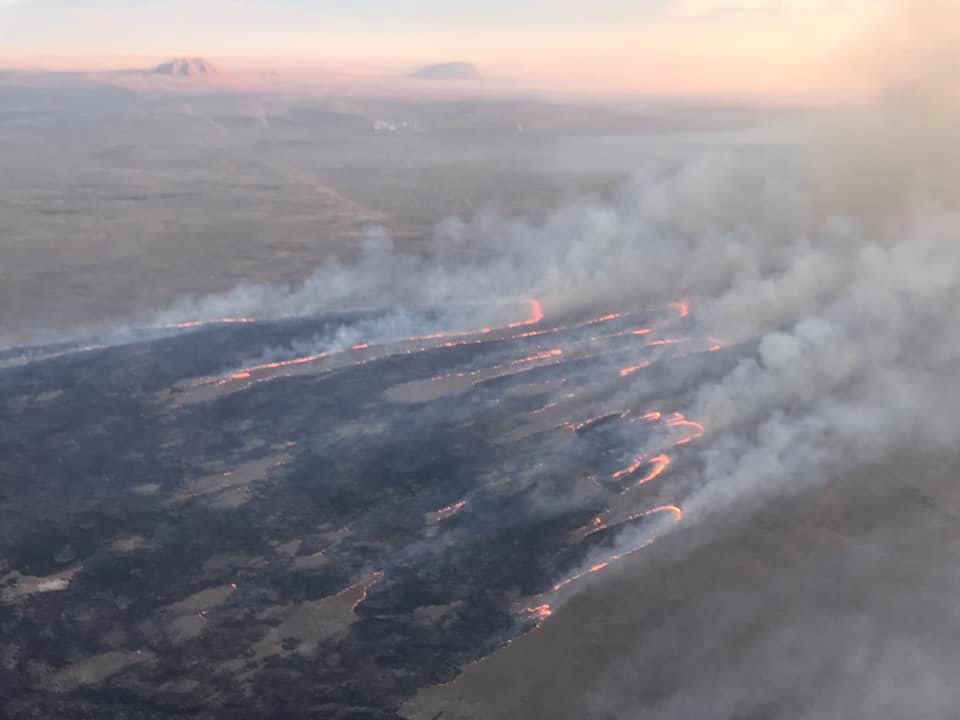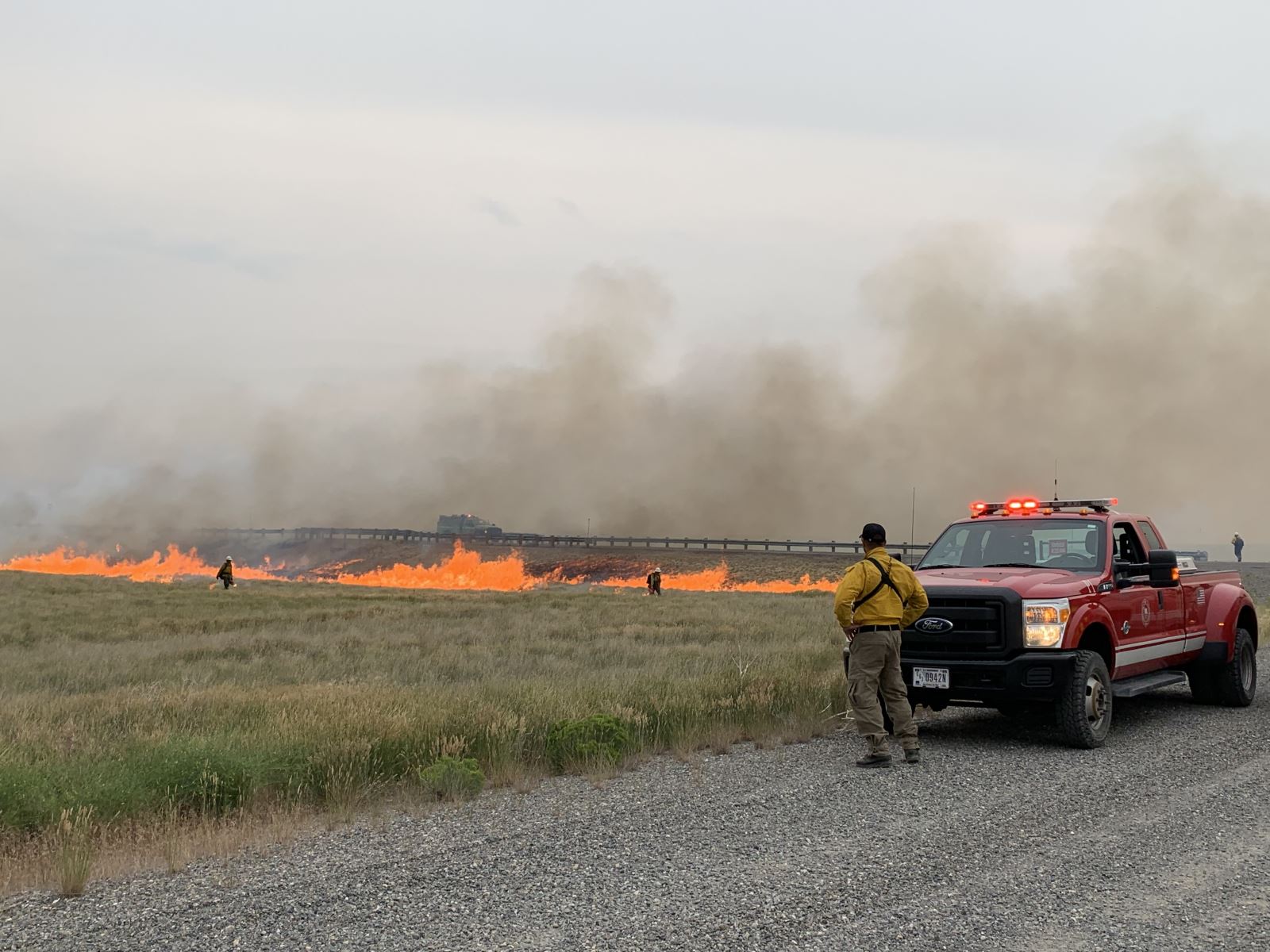 With summer 2020 at hand, the Idaho National Laboratory Fire Department is preparing for all eventualities. Fire is a fact of life on the Snake River Plain, the land on which INL sits, and the memory of 2019’s Sheep Fire, the largest in the Site’s history, is fresh in everyone’s minds.
With summer 2020 at hand, the Idaho National Laboratory Fire Department is preparing for all eventualities. Fire is a fact of life on the Snake River Plain, the land on which INL sits, and the memory of 2019’s Sheep Fire, the largest in the Site’s history, is fresh in everyone’s minds.
 Before each summer fire season, the INL Fire Department reviews its preparation procedures and lessons learned from previous fires. “We manage our operation around the fire threat,” said INL Fire Chief Eric Gosswiller. Snowpack over the winter was near normal in eastern Idaho and western Wyoming, but conditions in other parts of Idaho are reverting to drought. “The big picture is that there is above normal large fire potential for most of the Great Basin,” Gosswiller said. “Temperatures are expected to be above normal, we don’t expect much rain, and we have an abundance of grasses that could make for a big fire season regionally.”
Before each summer fire season, the INL Fire Department reviews its preparation procedures and lessons learned from previous fires. “We manage our operation around the fire threat,” said INL Fire Chief Eric Gosswiller. Snowpack over the winter was near normal in eastern Idaho and western Wyoming, but conditions in other parts of Idaho are reverting to drought. “The big picture is that there is above normal large fire potential for most of the Great Basin,” Gosswiller said. “Temperatures are expected to be above normal, we don’t expect much rain, and we have an abundance of grasses that could make for a big fire season regionally.”
Reported on the afternoon of July 22, 2019, the Sheep Fire burned an estimated 112,106 acres of vegetation. Despite its size, however, damage to INL property was limited to signs, incidental storage at one location, and 12 INL power distribution poles. No buildings were affected and there were no reported injuries.
In the aftermath, INL, the U.S. Bureau of Land Management (BLM), the state of Idaho and other partners developed a post-fire recovery plan to address impacts of fire suppression activities. Fire containment lines constructed with bulldozers during the Sheep Fire were reseeded in May, with high-priority areas seeded with a native grass mix.
INL has a highly trained fire department with extensive wildland firefighting experience. Twenty-two firefighters are on duty at all times, and if additional responders are needed, the department can recall off-duty employees to bring its force up to 75. For big emergencies, INL has a reciprocal firefighting agreement with regional fire departments, as well as an agreement with the BLM. The agreements allow agencies to assist one another with an aggressive initial attack and provide essential support during extended fire emergencies.
As it has everywhere, the COVID-19 pandemic has forced changes and precautionary measures. Firefighters’ temperatures are routinely taken, and briefings and meetings have been done online as much as possible. Logistical planning this year has focused on prevention and initial attack – coming at any reported fire aggressively with the aim of getting it under control as soon as possible.
As always, education is an important part of the firefighting effort. While lightning – the cause of the Sheep Fire – can’t be avoided, all INL employees are kept informed about high fire potential and precautions they need to take. Off-road vehicles and off-road activity are restricted in times of elevated fire danger.
“Anything we can do to keep fires from happening is going to be especially important,” Gosswiller said.

Source & Photo Credit: Idaho National Laboratory